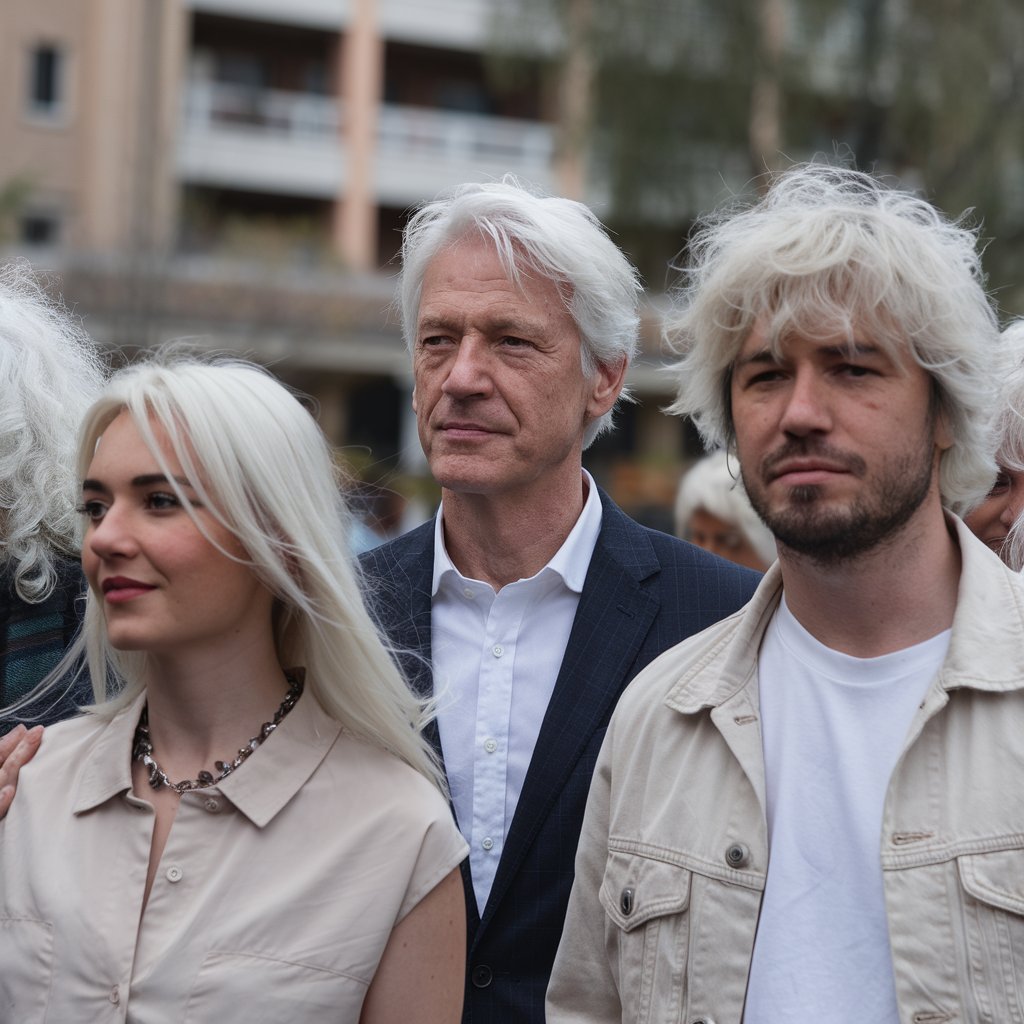
Why Our Hair Gets White?
Hair turning white, or graying, is a natural process linked to aging, genetics, and other factors. This phenomenon is primarily caused by the loss of melanocytes, the specialized cells responsible for producing melanin, the pigment that gives hair its color. Understanding this process at the molecular level involves a look into cellular dynamics, oxidative stress, and genetic factors.
Molecular Mechanism Behind Hair Graying
Melanocyte and Melanin Production: Hair color is determined by melanocytes found in the hair follicle’s bulb. These cells synthesize melanin in response to signals from surrounding cells, including keratinocytes. Two types of melanin contribute to hair color:
- Eumelanin (black and brown pigments).
- Pheomelanin (yellow and red pigments).
Melanin production depends on the enzyme tyrosinase, which converts the amino acid tyrosine into melanin within the melanocytes. As we age, the number and function of these melanocytes gradually decline, leading to less melanin production and eventually white or gray hair.
Oxidative Stress and Mitochondrial Dysfunction: One major cause of melanocyte decline is oxidative stress. Hair follicles experience oxidative damage from reactive oxygen species (ROS), which are byproducts of cellular metabolism. Over time, oxidative damage accumulates due to reduced antioxidant defenses within the melanocytes. In particular, the enzyme catalase normally breaks down hydrogen peroxide (H₂O₂), a common ROS. With age, catalase levels decrease, leading to an accumulation of H₂O₂ in hair follicles. The buildup of hydrogen peroxide can inhibit tyrosinase and disrupt melanin synthesis, bleaching the hair from within.
Studies show that mitochondrial dysfunction, which increases oxidative stress, also plays a significant role. The decline of mitochondrial function impairs the cell’s ability to manage oxidative damage, contributing to the depletion of melanocytes.
Genetics and Gene Expression: Genetic factors play a crucial role in determining when and how hair turns gray. Research has shown that genes like IRF4 and MITF are involved in regulating melanin production. Variations in these genes can influence the onset of graying. The Bcl2 gene, which regulates cell death, and MSX1, which controls melanocyte survival, are also associated with hair pigmentation.
Additionally, Wnt signaling, which is critical for the regeneration of hair and the activation of melanocytes, becomes less efficient with age, further contributing to the graying process. The failure of the hair follicle’s stem cells to replenish melanocytes is another factor in age-related hair graying.
Published Research Supporting the Mechanism
- Oxidative Stress and Hydrogen Peroxide Accumulation:
- Schallreuter, K. U., et al. (2009). “The human epidermis is a source of hydrogen peroxide: accumulation of hydrogen peroxide in the epidermis of vitiligo and its correlation with the loss of catalase.” Journal of Investigative Dermatology, 123(2), 212-221.
- This study demonstrates the accumulation of H₂O₂ in aging hair follicles and its impact on melanocyte function.
- Schallreuter, K. U., et al. (2009). “The human epidermis is a source of hydrogen peroxide: accumulation of hydrogen peroxide in the epidermis of vitiligo and its correlation with the loss of catalase.” Journal of Investigative Dermatology, 123(2), 212-221.
- Genetic Factors and Hair Graying:
- Adhikari, K., et al. (2016). “A genome-wide association scan in admixed Latin Americans identifies loci influencing facial and scalp hair features.” Nature Communications, 7, 10815.
- This research highlights the role of genetic variations, particularly IRF4, in hair pigmentation and graying.
- Adhikari, K., et al. (2016). “A genome-wide association scan in admixed Latin Americans identifies loci influencing facial and scalp hair features.” Nature Communications, 7, 10815.
- Mitochondrial Dysfunction and Melanocyte Decline:
- Arck, P. C., et al. (2006). “Towards a ‘free radical theory of graying’: melanocyte apoptosis in the aging human hair follicle is an indicator of oxidative stress induced tissue damage.” FASEB Journal, 20(9), 1567-1569.
- This paper discusses the link between oxidative stress, mitochondrial damage, and the apoptosis (cell death) of melanocytes in the hair follicle.
- Arck, P. C., et al. (2006). “Towards a ‘free radical theory of graying’: melanocyte apoptosis in the aging human hair follicle is an indicator of oxidative stress induced tissue damage.” FASEB Journal, 20(9), 1567-1569.
Conclusion
Hair graying is a complex biological process driven by the decline in melanocyte function due to oxidative stress, reduced antioxidant activity (e.g., catalase), mitochondrial dysfunction, and genetic predispositions. These factors disrupt melanin production, leading to the characteristic white or gray hair seen with aging. Scientific research continues to uncover the molecular pathways involved, with oxidative stress emerging as a central component in this natural aging process.